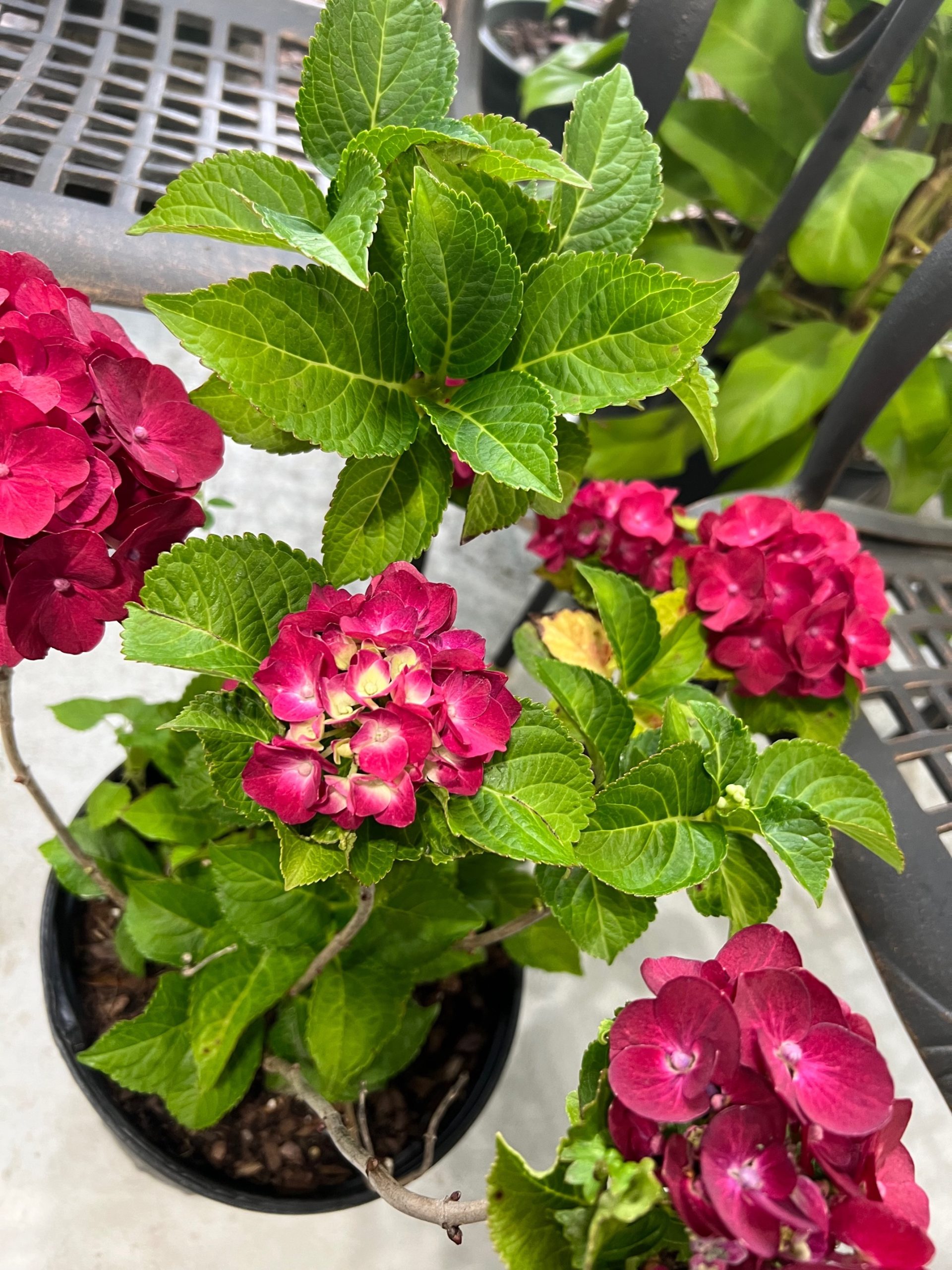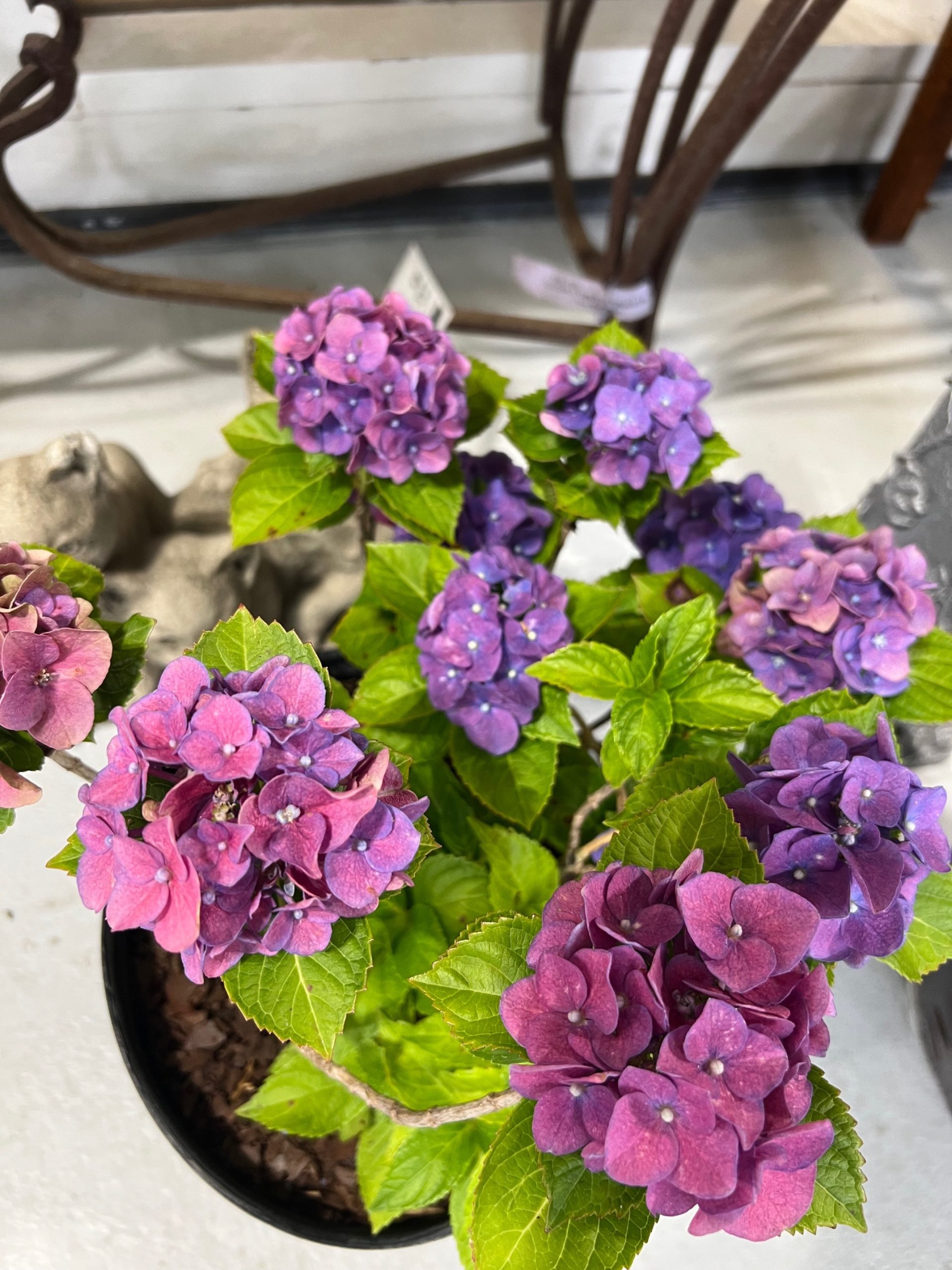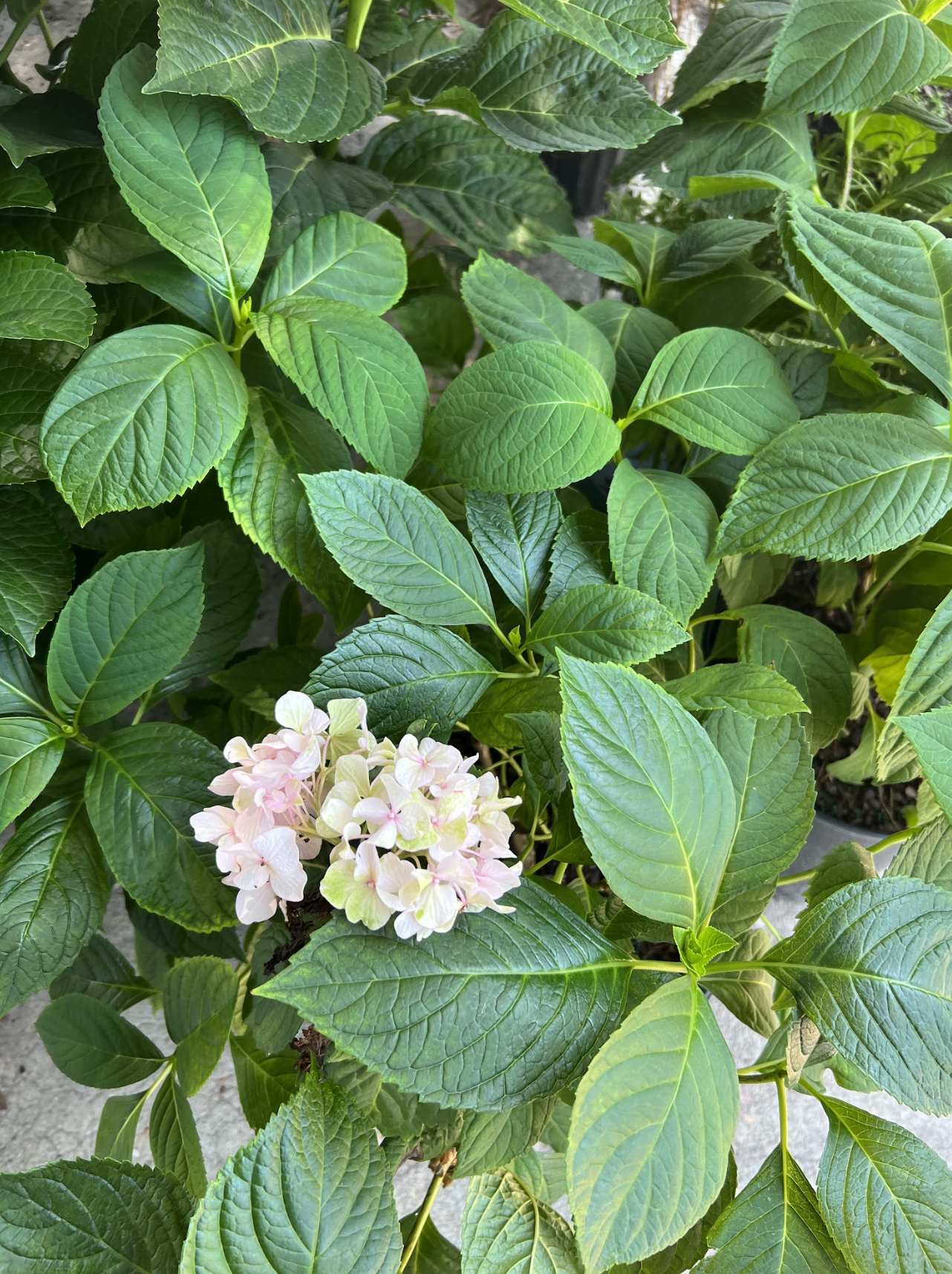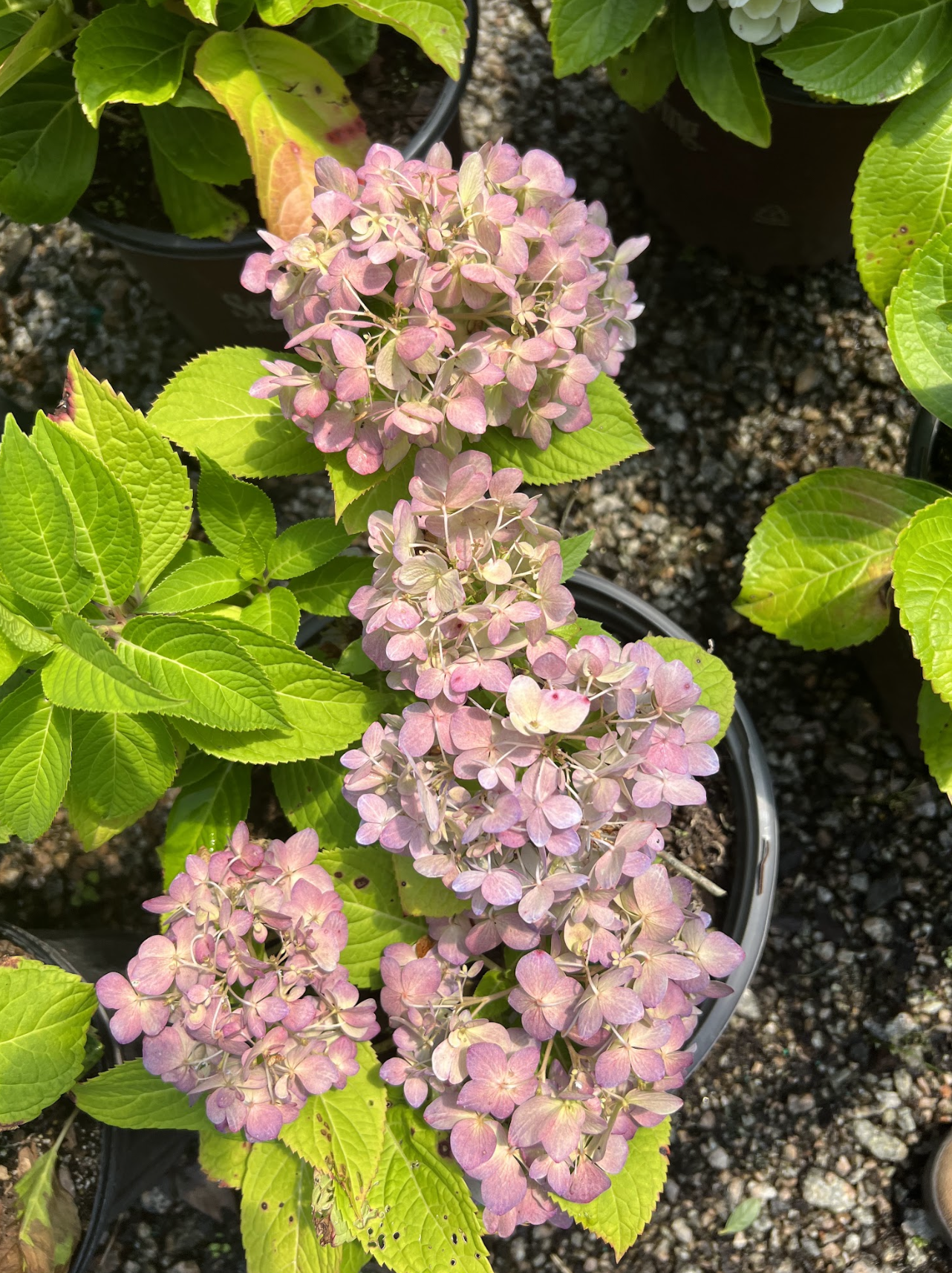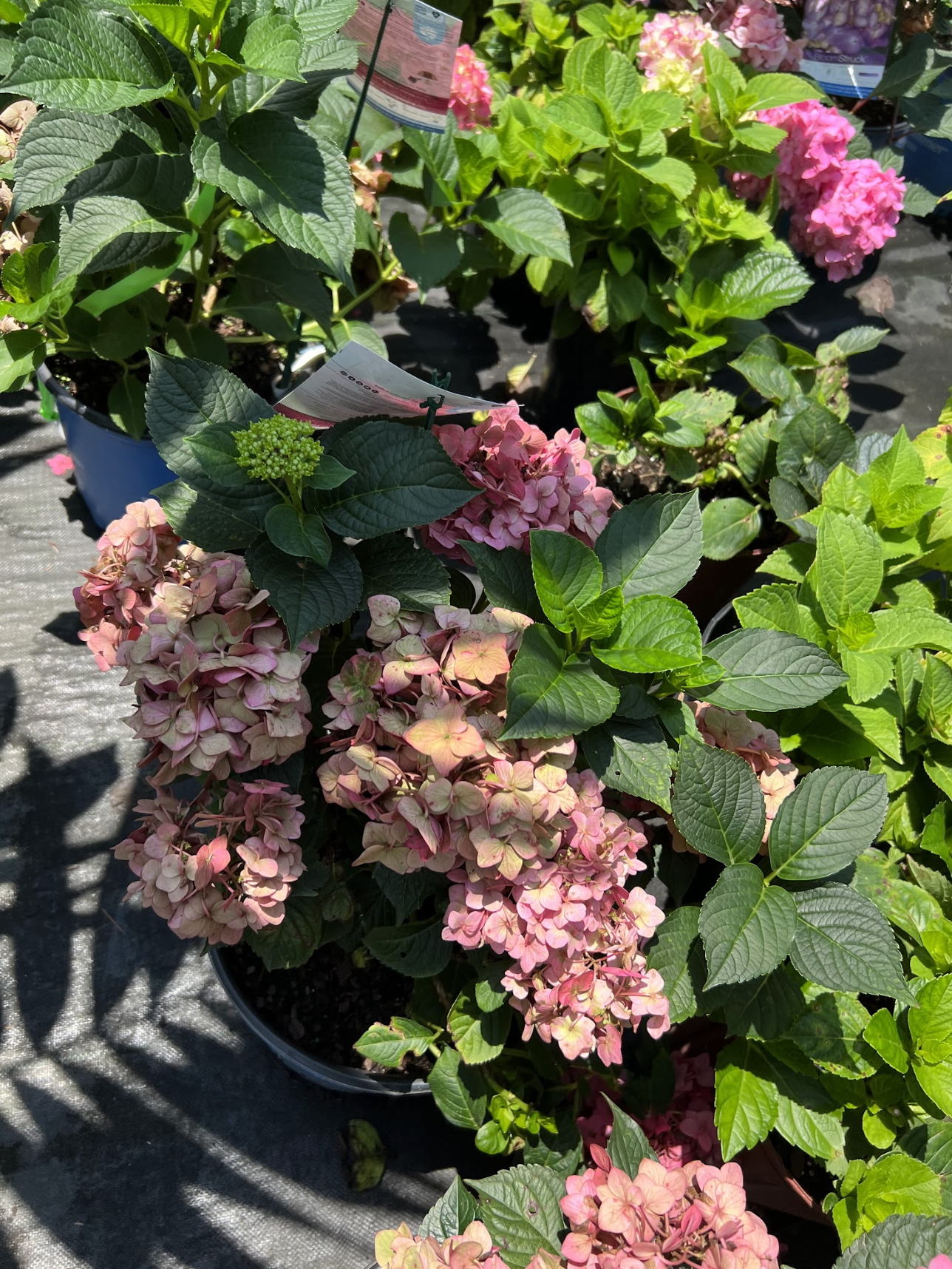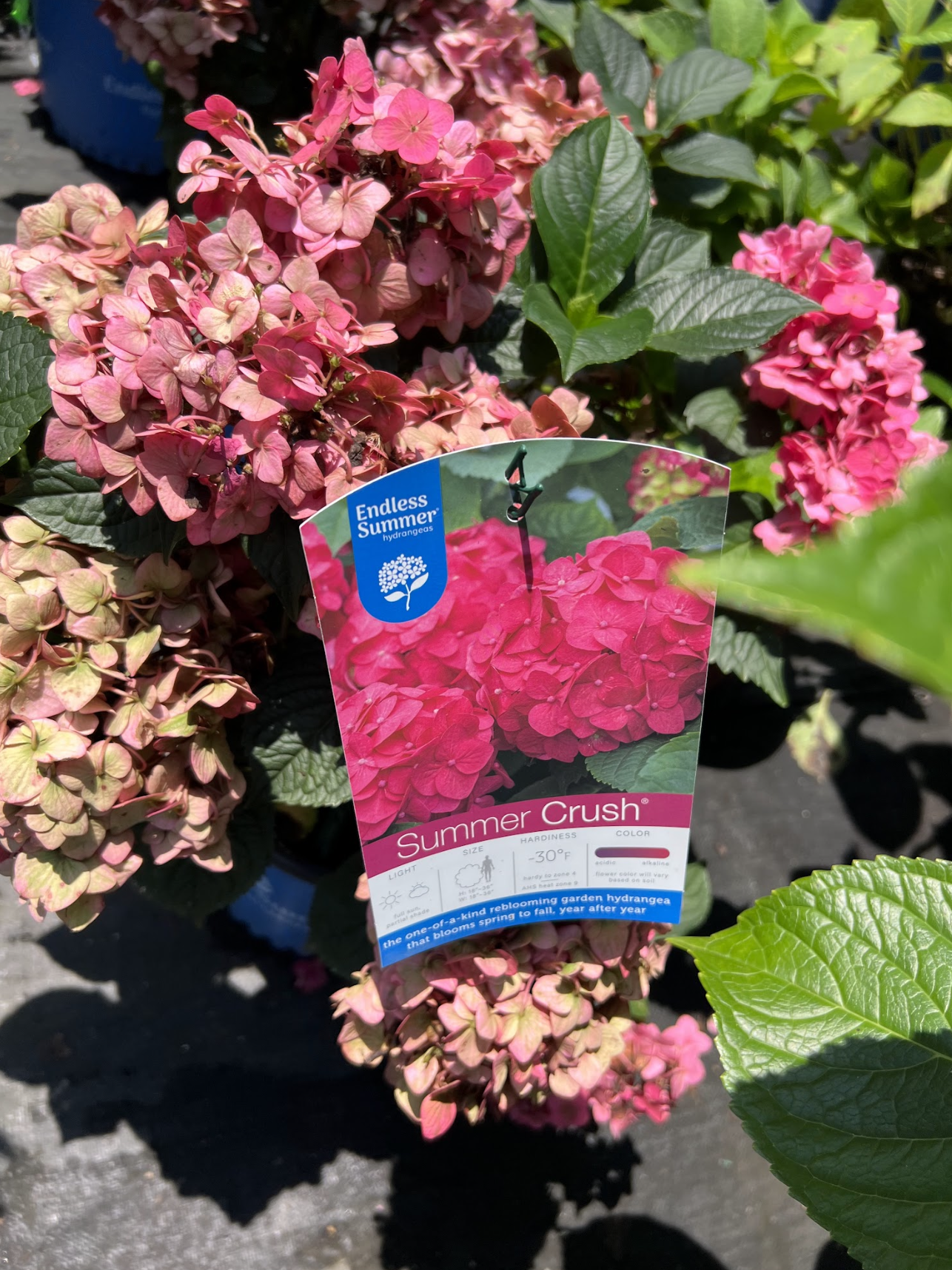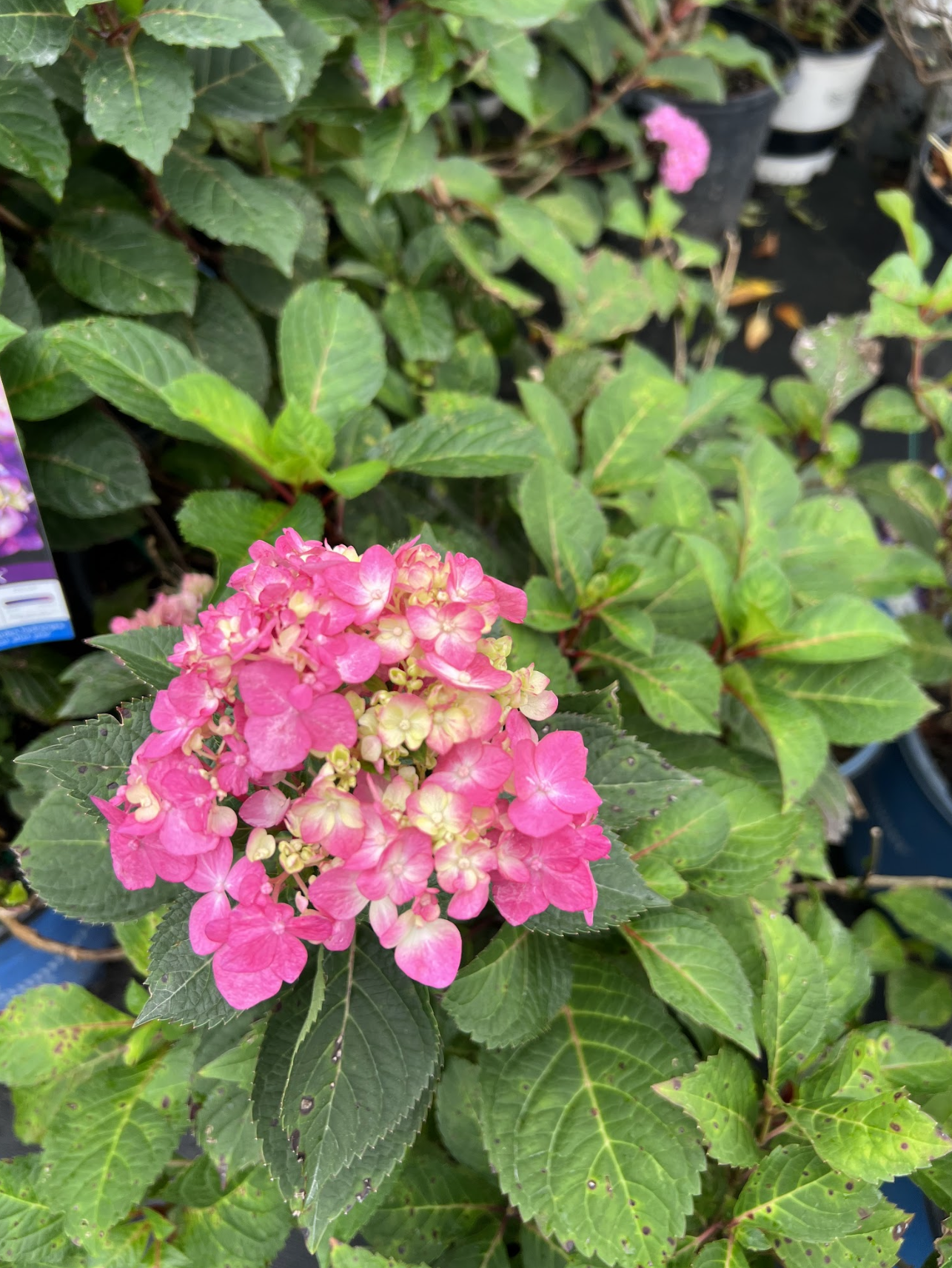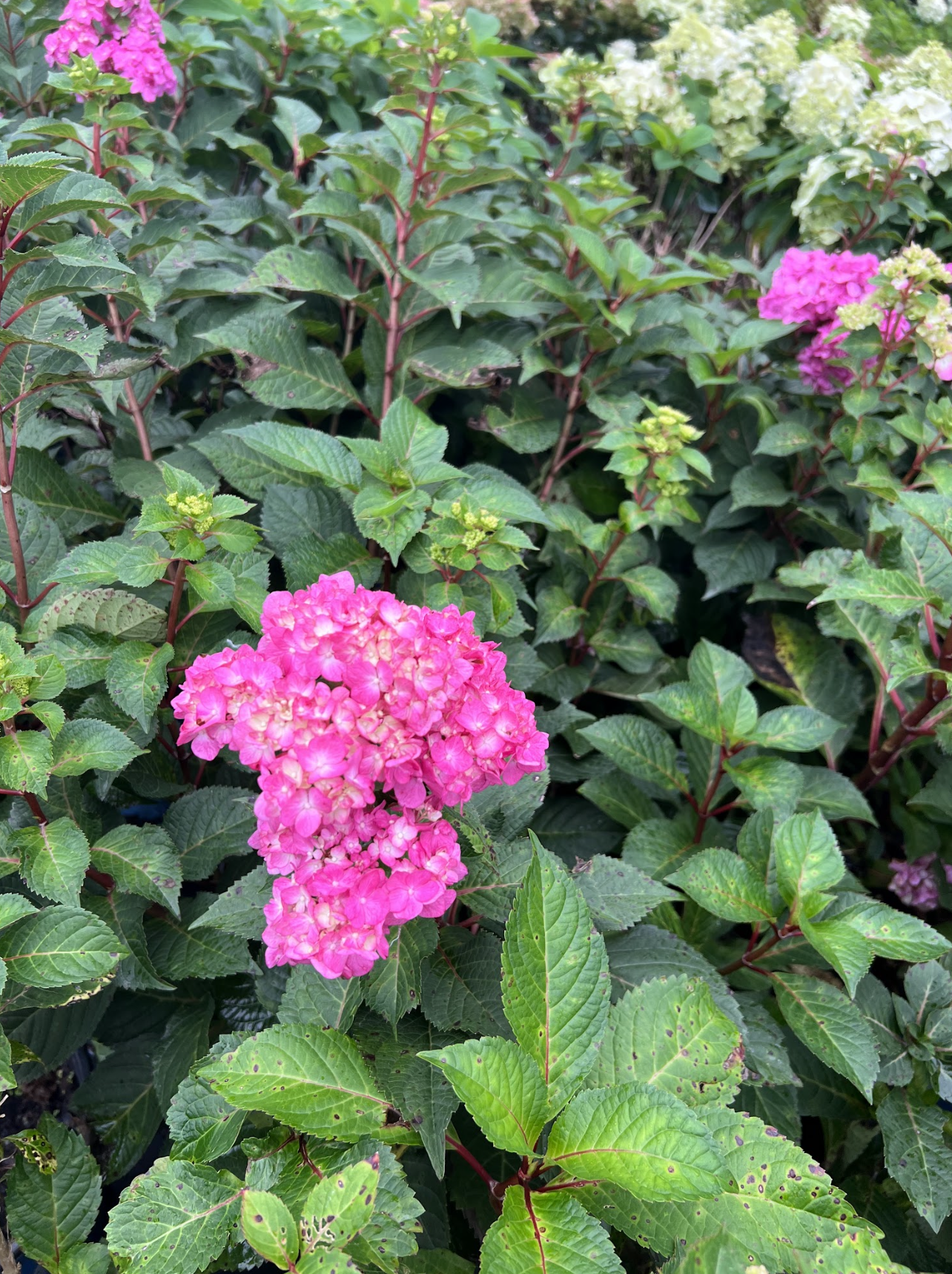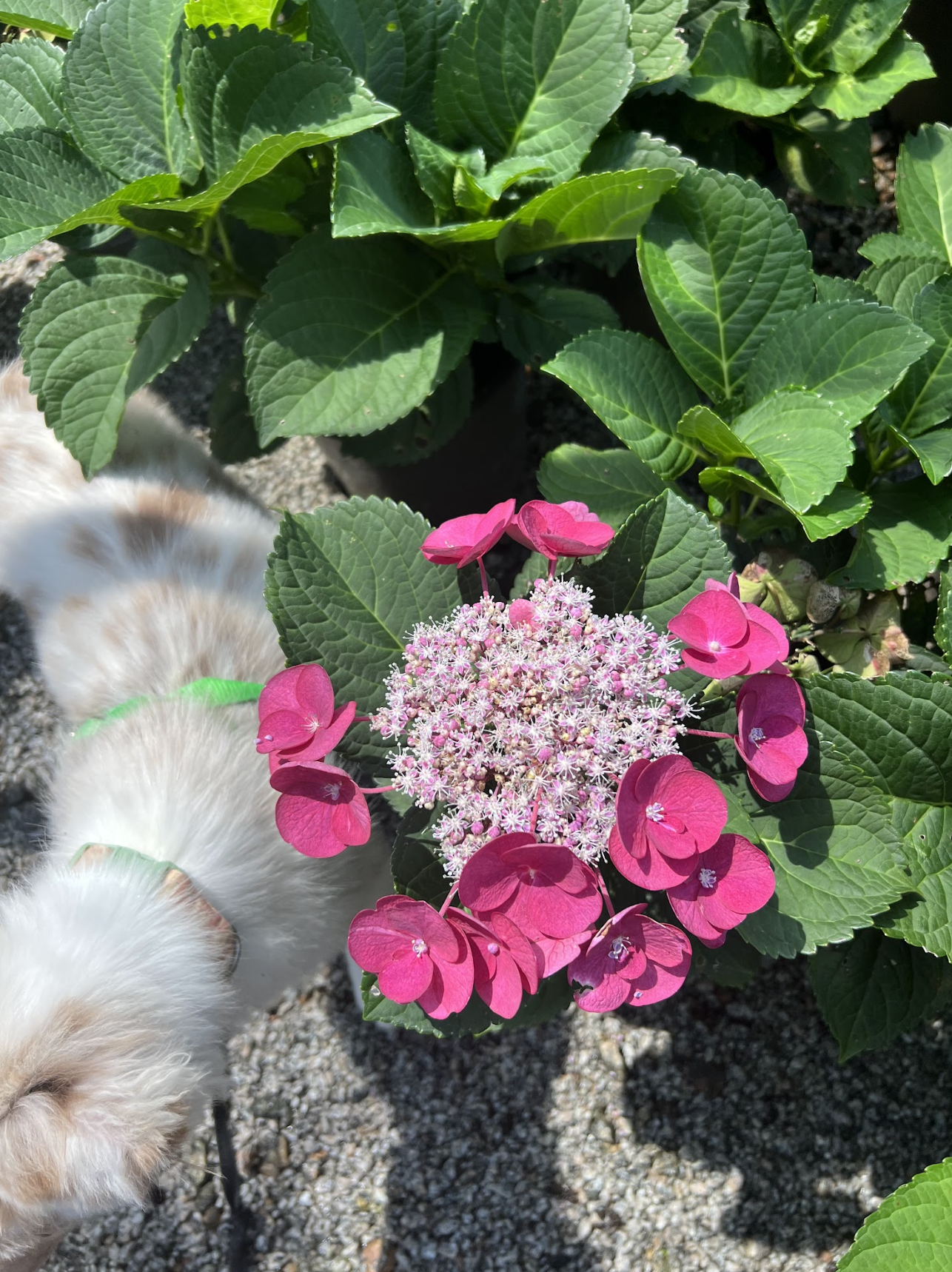- Bigleaf hydrangea
Botanical name: hydrangea macrophylla
Beginner friendly?: Yes
Average size at maturity: 3 -13 ft tall, 2.5 – 8 ft spread
Bloom time: Summer
Hardy zone: Zones 6-9
Flower color: Pink, blue, white, purple, red, cream
Foliage color: Green, yellow
Growth rate: About 2 ft or more a year
Pruning needs: Deadhead and remove dead or diseased branches as needed. Big-leaf hydrangeas can produce new buds on old growth.
Propagation methods: cut a stem just below a node and place in water until roots start to emerge
Landscape use: Perfect for filling in the middle of a border, eye-catching plant for midsummer, great centerpieces of mixed containers
Light needs: Partial shade – fully receive the morning sunlight while being partially shaded in the afternoon – 4 hours of sunlight
Special features: The soil pH will affect flower colors. Bigleaf hydrangeas growing in acidic and aluminum-rich soil will bloom blue, while in alkaline soils they bloom pink. An appropriate amount of aluminum sulfate or lime can be added to the soil to adjust the pH if you want to control the flower color.
Water needs: Does best in consistent moisture, often gets droopy leaves when it needs more water
Fertilizing needs: Use a small amount of compound fertilizer a few times in the spring and summer during that plant growing season
Best time to plant: spring or fall
Best type of soil: loam soil.
Companion plants: coral bells, astilbe, hostas, boxwood, ferns
Toxicity level: The leaves, flowers, buds, and bark of the plant all contain the toxic component, cyanogenic glycoside. Eating any part of the plant can cause nausea, vomiting, and diarrhea.
Invasive species: no

